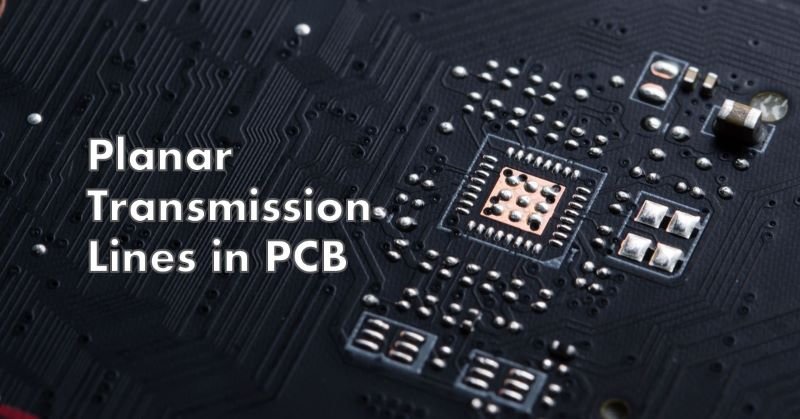Carbon Nanotubes: The Next Frontier in PCB Material Innovation
Printed Circuit Boards (PCBs) form the backbone of virtually all electronic devices, providing the necessary infrastructure to connect and support electronic components. Traditionally, PCBs are made from materials like FR4, which combines a woven fiberglass cloth with an epoxy resin binder. While these materials have served the industry well, the growing demand for higher performance, miniaturization, and enhanced reliability in electronics has exposed their limitations.
As electronic devices become more compact and powerful, the need for new materials that can offer superior electrical, thermal, and mechanical properties is becoming increasingly critical. These materials must not only support higher levels of functionality but also contribute to the ongoing efforts toward sustainable and environmentally friendly electronics.
Introduction to Carbon Nanotubes (CNTs) and Their Relevance in Modern Electronics
Carbon nanotubes (CNTs) have emerged as a revolutionary material in the field of nanotechnology, offering exceptional properties that are ideal for advanced electronics. CNTs are cylindrical nanostructures composed of carbon atoms arranged in a hexagonal lattice. Their unique structure gives them extraordinary electrical conductivity, thermal conductivity, and mechanical strength, making them highly attractive for various applications in modern electronics.
In the context of PCB technology, CNTs present a promising solution to the limitations of traditional materials. By integrating CNTs into PCBs, manufacturers can potentially achieve significant improvements in performance, efficiency, and durability, paving the way for the next generation of electronic devices.
What Are Carbon Nanotubes?
Carbon nanotubes are one-dimensional nanostructures with a diameter typically in the range of 1-10 nanometers and a length that can extend up to several micrometers. They can be thought of as rolled-up sheets of graphene, which is a single layer of carbon atoms arranged in a hexagonal pattern. Depending on how the graphene sheet is rolled, CNTs can be classified into two main types: single-walled carbon nanotubes (SWCNTs) and multi-walled carbon nanotubes (MWCNTs).
- SWCNTs consist of a single graphene cylinder and exhibit remarkable electrical properties, making them ideal for high-performance electronic applications.
- MWCNTs are composed of multiple concentric graphene cylinders, providing superior mechanical strength and durability, which can be beneficial in structural applications.
The extraordinary properties of CNTs stem from their unique atomic structure. They exhibit excellent electrical conductivity, comparable to or even exceeding that of copper, and exceptional thermal conductivity, surpassing that of most metals. Additionally, CNTs possess an impressive tensile strength, making them one of the strongest materials known to science.
Importance of CNTs in Nanotechnology and Electronics
CNTs have revolutionized the field of nanotechnology, enabling the development of advanced materials and devices with unprecedented performance characteristics. Their unique properties make them ideal for a wide range of applications, including transistors, sensors, batteries, and, importantly, printed circuit boards (PCBs).
In electronics, CNTs are particularly valued for their ability to enhance the electrical and thermal performance of materials, contributing to the development of faster, more efficient, and more reliable electronic devices. Their nanoscale dimensions also make them ideal for use in miniaturized components, supporting the ongoing trend toward smaller and more powerful electronics.
Why Use Carbon Nanotubes in PCBs?
Benefits of CNTs in PCBs, Including Electrical Conductivity, Thermal Management, and Mechanical Strength
Integrating carbon nanotubes into PCBs offers several significant advantages over traditional materials. One of the primary benefits is the superior electrical conductivity of CNTs, which can enhance the signal transmission capabilities of PCBs, reducing signal loss and improving overall device performance. This is particularly important in high-frequency applications where traditional materials may struggle to maintain signal integrity.
Thermal management is another critical area where CNTs excel. The exceptional thermal conductivity of CNTs allows for more efficient heat dissipation within the PCB, reducing the risk of overheating and improving the reliability and lifespan of electronic devices. This is especially valuable in high-power applications where effective thermal management is crucial.
In addition to electrical and thermal benefits, CNTs also offer outstanding mechanical strength. This makes them ideal for use in PCBs that are subject to mechanical stress or where durability is a key concern. The use of CNTs can enhance the overall structural integrity of the PCB, making it more resistant to wear and tear.
Comparison with Traditional PCB Materials
Traditional PCB materials like FR4, which is composed of fiberglass and epoxy resin, have been the industry standard for many years. While they offer a good balance of performance and cost-effectiveness, they have limitations in areas such as electrical conductivity, thermal management, and mechanical strength. For instance, FR4 materials can struggle to dissipate heat efficiently, leading to potential overheating issues in high-performance applications.
In contrast, CNT-based PCBs can address these limitations by offering significantly improved electrical and thermal properties, as well as enhanced mechanical durability. While the cost of CNT materials may be higher, the performance benefits they offer could justify their use in applications where traditional materials fall short.
Manufacturing Process of CNT-Based PCBs

The integration of carbon nanotubes into PCB manufacturing involves several specialized techniques to ensure that the CNTs are properly embedded within the PCB layers. The process typically starts with the preparation of CNTs, which may involve purification, functionalization, or dispersion to enhance their compatibility with the PCB materials.
Once prepared, the CNTs can be incorporated into the PCB during various stages of the manufacturing process. For example, they can be mixed with the resin used in the substrate material or applied as a coating on copper traces to improve conductivity. The key challenge is to ensure that the CNTs are evenly distributed and properly aligned to maximize their performance benefits.
Techniques and Challenges in Embedding CNTs into PCB Layers
Several techniques can be used to embed CNTs into PCB layers, each with its own set of challenges. One common approach is the use of spin coating, where a CNT solution is applied to the PCB surface and spun at high speeds to create a thin, uniform layer. Another method involves screen printing, where a CNT-infused ink is printed onto the PCB substrate.
One of the main challenges in embedding CNTs into PCBs is achieving consistent and reliable results. CNTs tend to agglomerate, forming clumps that can negatively impact the performance of the PCB. To overcome this, manufacturers may use surfactants or other dispersion agents to keep the CNTs separated. Additionally, ensuring proper adhesion between the CNTs and the PCB materials is crucial to prevent delamination or other issues that could compromise the integrity of the PCB.
Despite these challenges, ongoing research and development are leading to improved techniques for embedding CNTs into PCBs, paving the way for their wider adoption in the electronics industry.
Advantages of CNT-Based PCBs
Enhanced Performance: Electrical, Thermal, and Mechanical Properties
Carbon nanotubes offer exceptional electrical conductivity, allowing for faster signal transmission and reduced signal loss. This is particularly valuable in high-frequency applications, where maintaining signal integrity is crucial. Additionally, the superior thermal conductivity of CNTs enables more efficient heat dissipation, preventing overheating and extending the lifespan of electronic components. From a mechanical perspective, the high tensile strength of CNTs contributes to the durability and resilience of the PCB, making it less susceptible to damage from mechanical stress.
Potential for Miniaturization and Improved Reliability
The unique properties of CNTs also open up new possibilities for the miniaturization of electronic devices. As devices become smaller, the components within them must also shrink, without sacrificing performance. CNTs, with their nanoscale dimensions and high-performance characteristics, are ideal for this purpose. By integrating CNTs into PCBs, manufacturers can create more compact and lightweight devices, which are also more reliable due to the improved performance and durability provided by CNTs. This is especially important in industries like telecommunications, medical devices, and consumer electronics, where space is at a premium, and reliability is critical.
Environmental Impact and Sustainability
In addition to their performance benefits, CNT-based PCBs offer potential environmental advantages. Traditional PCB materials often involve the use of hazardous substances and generate significant waste during the manufacturing process. CNTs, on the other hand, can contribute to more sustainable manufacturing practices. Their high strength and durability reduce the need for frequent replacements, leading to less electronic waste. Furthermore, ongoing research is exploring the potential for using CNTs in more environmentally friendly manufacturing processes, such as using less toxic chemicals or reducing energy consumption during production.
Applications of CNT-Based PCBs
CNT-based PCBs are poised to have a transformative impact on a variety of industries. In the telecommunications industry, for example, the superior electrical properties of CNTs make them ideal for use in high-frequency communication devices, where signal integrity is paramount. The aerospace and defense sectors can also benefit from CNT-based PCBs due to their lightweight nature and high mechanical strength, which are essential for reducing the overall weight of aircraft and spacecraft while maintaining durability and reliability.
In the automotive industry, CNT-based PCBs can be used in advanced driver assistance systems (ADAS) and other high-performance electronics, where thermal management and reliability are critical. The medical device industry is another area where CNT-based PCBs can have a significant impact, particularly in implantable devices and other miniaturized medical electronics that require high performance in a compact form factor.
Examples of Current or Upcoming Technologies Utilizing CNT-Based PCBs
Several emerging technologies are beginning to incorporate CNT-based PCBs. For instance, the development of 5G networks and the Internet of Things (IoT) is driving the need for high-performance, compact, and reliable PCBs, which CNTs can provide. Wearable technology, including smartwatches and fitness trackers, is another area where the miniaturization and durability of CNT-based PCBs are advantageous.
In the field of renewable energy, CNT-based PCBs are being explored for use in solar panels and other energy-harvesting devices, where their superior electrical and thermal properties can improve efficiency. As research and development continue, it is likely that more industries will adopt CNT-based PCBs, leading to new and innovative applications.
Conclusion
Carbon nanotube (CNT) materials represent a significant advancement in PCB technology, offering unparalleled electrical, thermal, and mechanical properties that traditional materials cannot match. The integration of CNTs into PCBs not only enhances the performance and reliability of electronic devices but also opens the door to new possibilities in miniaturization and sustainability. As industries continue to demand more from their electronic components, CNT-based PCBs are well-positioned to meet these challenges, driving innovation across various sectors. As research and development progress, CNT-based PCBs could become the new standard in electronics, paving the way for a future where devices are faster, smaller, and more environmentally friendly.








